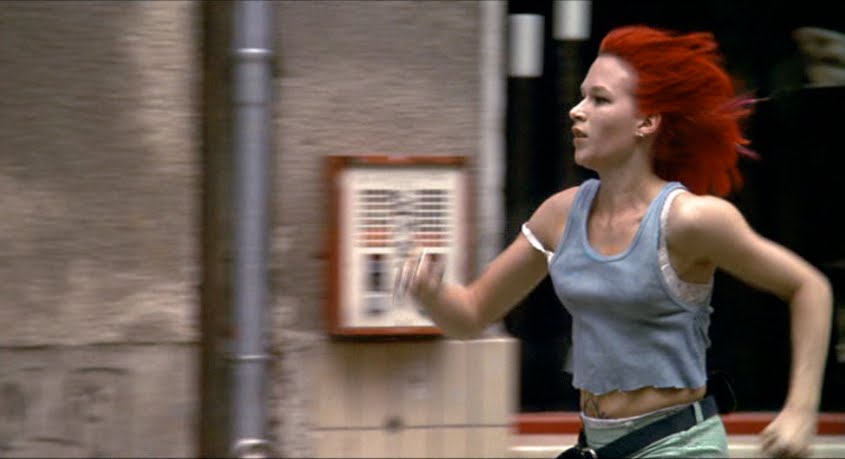
Left or right? A decision not only for the director, but the characters themselves. Showing a character’s inner thought process is one of the most prolific issues facing cinema, and has been since its birth; without the use of forthright soliloquy, which all too candidly spells out the authors views, and doesn’t let the audience perceive anything, showing what a character is thinking is hard – ever so hard.
Composition and blocking help with this; they allow the director to show what a character is doing, and let the audience figure out what they are thinking, with subtle hints towards the way they wish it to be perceived.
This is why lateral character movement is so important and, subsequently, why any lateral movement is important. People personify objects: if a leaf blows left and right, never going either direction for more than a few moments, people assume it can’t decide where to go – I had a hard time describing the way it’d move as anything other than indecisive.
So, what films take advantage of this? I’m tempted to say all of them, but there are poor quality films too. This is my list of some films which use lateral movement in an interesting and eye opening way – to good or bad affect.
1. Alexander Nevsky (Dir. Sergei Eisenstein)
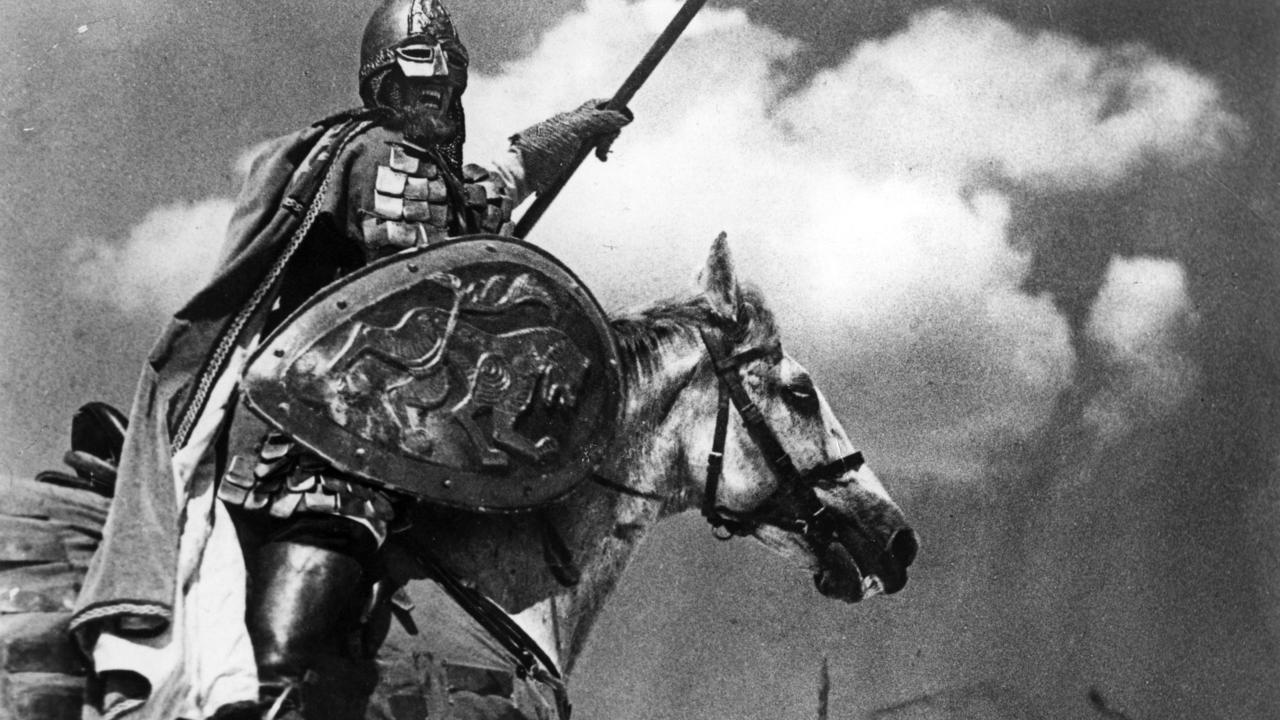
Alexander Nevsky is a film depicting an attempted invasion of Novgorod, during the 13th century. Directed by formalist film theorist Sergei Eisenstein, the film in saturated with symbolism and visual metaphor.
Eisenstein was a formalist film theorist. This makes applying some of the fundamentals of film theory to his films very straightforward – not that his work is juvenile, just that he played such a large role in developing those theories, it’s only rational he would apply them to his own practice.
The rules of screen direction are some of the simplest in film theory, and have innumerable potential to be built upon; they are engrained into most people’s way of perceiving the world, before ever watching – let alone studying – a film.
These rules – though it pains me to call them that, for they are ever broken and built upon – stem from the way we read in western, and Russian, civilisation: reading from left to right trains the eye to follow movement in that direction, making it incredibly easy to do.
When this idea is transposed onto the medium of film, action travelling right to left becomes more difficult to follow. Thus, a character’s journey can be made to seem more difficult by moving him from right to left, as opposed to the other way.
In the first shot of the Mongol emissary, the caravan moves from bottom right of the frame, to middle left. This is possibly the most difficult and, in this case, futile direction of movement – not only is the caravan travelling against the left/right rule, but is moving uphill.
Knowing this simple bit of film theory, and assuming the director would apply it – which is almost certain, in this case – allows one to draw several conclusions from its use: one, the characters entering are unlikely to achieve their goal, as their direction tells us their journey is difficult; two, the characters are likely to be the foes, or even the antagonists; three, the characters, upon returning from where they came, will face a much easier journey.
As it turns out, the Mongols – a group which Alexander, the protagonist, has previously been at war with – come in search of Alexander, to offer him a position as a commander. He refuses, and they quickly leave.
2. Stagecoach (Dir. John Ford)
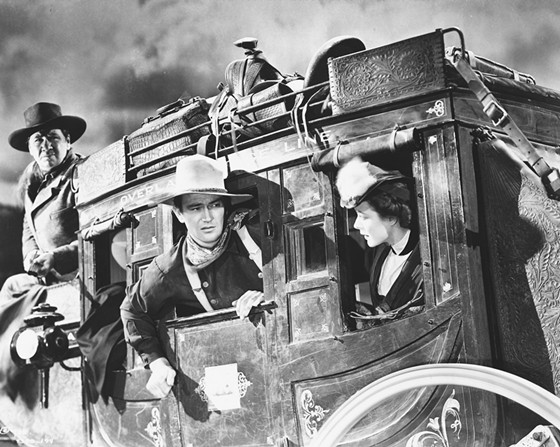
Despite John Ford’s clear understanding of the conventions of cinema, being born into the era of scientific filmmaking, some of his best known works defy these conventions. In Stagecoach the use of lateral movement is incredibly confusing – daunting to analyse. In this film, Ford cuts from left to right, seemingly oblivious to the way it might affect the audience, there is no obvious reason for this erratic composition – that is, no narrative reason.
As it turns out, John Ford not only understood the conventions of filmmaking on set, but knew what would happen once the film was processed. He knew editors were likely to cut parts of shots without fully understanding his vision.
With this in mind, he starting shooting without adhering to the rules of screen direction; this forced editors to keep the full shot in the film, as cutting the characters’ entrances and exits would make the action impossible to follow. This meant Ford could have more control over the pacing of his films, allowing him to exercise his auteurial rights as one of the twentieth century’s greatest filmmakers.
Ford also understood the economics of filmmaking; he is rumoured to have said that the budget of Stagecoach was too low to allow time to move the camera around to follow the action, specifically in the ambush scene.
This second piece of information puts a certain weight on the scenes in which Ford goes well out of his way to move the camera, in order to change the screen direction.
3. Full Metal Jacket (Dir. Stanley Kubrick)
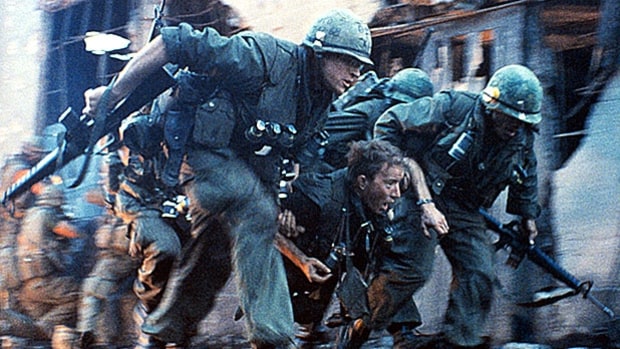
In Kubrick’s dehumanising account of the Vietnam war, he uses just about every trick in the book to deliver a disturbingly funny account of war – at least at the beginning of the film. We soon realise it’s much more horrific than that.
In the first few scenes of the film we witness what appears to be cold utilitarianism; however, as the film progresses, this coldness turns to brutality as the characters lose sight of what their goal really is. And what is utilitarianism without a goal? Directionless inhumanity, that’s all.
The use of lateral movement in this film reflects this idea that the war is a rather aimless affair. In several scenes the action moves in both directions, left and right, without forming any patterns.
The movement seems to lack any sense of order, which is particularly sticking when taking into account Kubrick’s tendency towards symmetry and order – which occasionally moves uncomfortably close to sterility.
A brilliant example of this is in an attack on the US army base in which the lead character – ‘Joker’ – is stationed. The troops run screen-left to right until they reach their defensive posts, at which point the camera crosses the one hundred and eighty-degree line, and the characters appear to be shooting directly backwards – right towards their own men.
This not only disorientates the audience, further driving home the theme of chaos, but seems to foreshadow the infighting, which jeopardises the platoon in the climax of the film.
4. The Last Battle (Dir. Luc Besson)
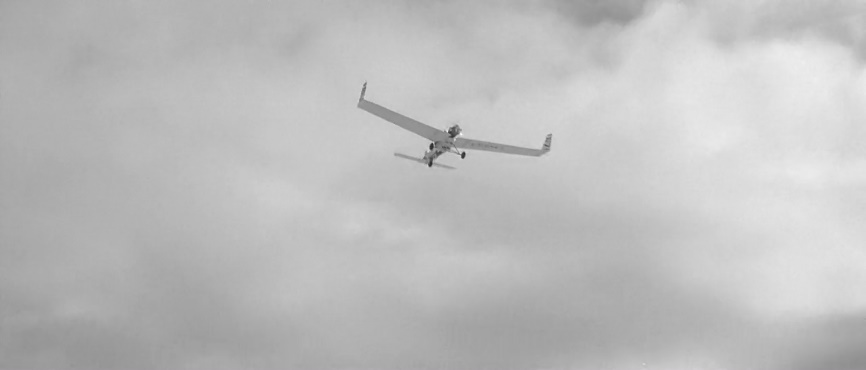
Luc Besson’s first feature film shows – from the point of view of an intelligent, talented and incredibly lonely man – the struggle to survive in a post-apocalyptic world, in which all humans have mysteriously become mute.
The Last Battle is a film with a refreshing use of the cinematic language; the film is void of dialogue and colour; it focuses solely on composition, blocking, physical performance, music and diegetic sound effects.
The film has a powerful momentum to it: this is due – in part – to Éric Serra’s driving electronic soundtrack, along with the juxtaposition of fast action scenes and slow scenes of character interaction – which I would call dialogue scenes, had they any dialogue.
For the most part the use of lateral movement, in this minimalist film, is somewhat simplistic – it agrees with the conventions of film language. However, there is one scene in which a lateral movement in itself creates an additional layer of narrative.
In this scene the lead character, or The Man – as he is referred to in the credits – flies his small home-made aeroplane back to the first group of survivors he encounters, after spending an ambiguous amount of time with The Doctor.
Throughout most of the film the movement of The Man is comprised of shots in which he’s leaving a safe place, travelling one direction on screen, and shots of him returning, travelling the other. In this scene he is flying back from where he came, yet the screen direction does not reflect this; he is flying the same direction as when he left his first location.
This is an easy piece of information to overlook, to take as a simple incident by a first time director, but is that really the case? It may be. On the other hand, at this point in the film, the first location – the office where he lived, and the settlement of other survivors – is no longer a safe place.
Moreover, the character had spent a long while with The Doctor, and had grown to feel quite at home, before – like at the start of the film – he was intruded upon and his haven was destroyed.
This visual parallel, along with the narrative similarities, poses an interesting question about how the director would like the audience to perceive The Man’s journey back; is this decision to return a move backward or, rather, is his return a move forward? It’s very possible Luc Besson is suggesting The Man is still moving forward.
5. Run Lola Run (Dir. Tom Tykwer)
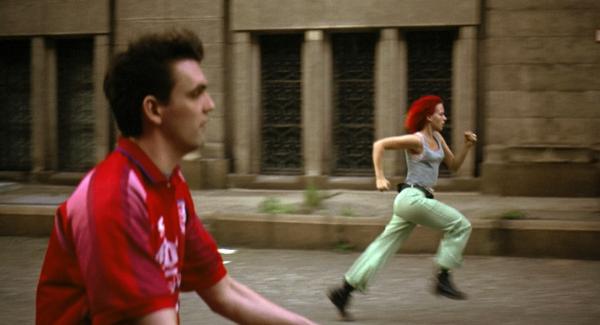
Possibly the most exhausting action movie of the twentieth century, Run Lola Run is the desperate search for one-hundred-thousand marks in twenty minutes. Lola’s boyfriend (Manni) has lost the mob money he was responsible for, he has twenty minutes before he’s meant to drop off the cash, and he calls Lola for help.
The film is set to a never-ending electronic soundtrack which – when the camera isn’t – is raising your heart rate, without permission. Lola runs and runs, the music drives, and the camera follows.
The film takes the form of three attempts to find the money and reach Manni, before time runs out. Each run is almost identical to the one before, however, Lola makes different choices each time – we are never told whether she remembers the runs, or whether they are in an alternate reality. This format is utterly confusing, so a clear sense of direction is paramount in avoiding pure havoc in the minds of the audience.
Throughout most of the film Lola runs right to left, and in each of her unsuccessful runs there is very little movement in any other direction. In the final run she avoids much of the chaos she collides with in the first two – this is the first hint this run might be less futile.
As she arrives outside a casino, yet to find any of the money, Lola is suddenly running in the opposite direction, left to right. Not only is this a drastic change, which lets us know something is different, but she is now moving in what is commonly consider the ‘easier’ direction.
Tom Tykwer, most likely, uses this visual cue to signal that something is going better for Lola, this time around. Once she enters the casino her luck is unfathomable, she wins all the money she needs, after entering with less than the minimum pay-in.
Applying such a simple rule of film, so thoroughly, helps Tykwer ground the audience in an otherwise visually, and narratively, obscure situation. Tykwer uses this kind of simple visual language throughout the whole film, to a similar effect.
Author Bio: Ben is, first and foremost, a performer. A passion for circus performance, and the realisation of that passion, formed the happiest memories of his childhood. Consequently, audiences have always had a place in his mind; understanding audience reactions fascinated him from a young age – figuring out how to squeeze that last drop of admiration from a crowd, knowing when to pause, when to take a call, or how to deliver a punchline. This passion for performance, along with an interest in technology, and a fascination with psychology, lead him to studying Film and Television at Plymouth College of Art.